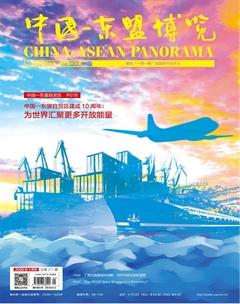Myanmar Independence Day
Thet Naung

Myanmar celebrates its Independence Day on January 4th each year. Independence Day is a major celebration of Myanmar that allows the people to reflect on their nations history and independence. As a public holiday, government commemorates with a parade in Capital, President and Vice President address the nation and all day in the whole country Myanmar people took to the streets to celebrate Independence Day in an interesting way with no fireworks but played games or community events instead to mark the occasion. Myanmars citizens have an opportunity to spend time for their friends and family members, children enjoying their holiday with their neighbors and part of the culture of the day are in the white lines that are drawing down the streets to host games and of course with loudspeakers.
Myanmar lost out her independence in 1885. Under the leadership of General Aung San (father of Daw Aung San Suu Kyi, State Counsellor of Myanmar) and leaders, joining hands with the people put a strong resistance and drove the colonialist out of Myanmar. Myanmar regained her independence on January 4th, 1948. It turns the 72nd anniversary in 2020.
Myanmar officially called the Republic of the Union of Myanmar, also known as the Golden land, is rich in its own cultures and natural resources. Also, its numerous historical pagodas, temples, beauty spots, archaeological sites, snow-peaked mountains, deep forests with abundant flora and fauna, rivers and natural lakes, beaches and archipelagos, 135 national races with their colorful costumes and customs, traditional arts and crafts all make up Myanmar. Predominantly Myanmars official language is Burmese (Bamar), while ethnic minorities speak Chin, Kachin, Kayin, Shan and other 135 hill-tribe dialects, and also Cantonese, Mandarin, Hindustani and Urdu are spoken by Chinese and Indian Immigrants. Being once a British colony, English is also widely spoken in Myanmar.
Myanmar is located in South-East Asia, bounded on the north by Tibet Autonomous Region of China; on the east by Yunnan Province of China, Laos, and Thailand; on the south by the Andaman Sea and the Bay of Bengal; and on the west by the Bay of Bengal, Bangladesh, and India. It can be said that Myanmar is unique in having the two most populous and great civilizations in the world, China and India as its neighbors but its culture is neither that of India nor that of China exclusively. The total area of the country is 677,000 square km (261,228 square miles) and coastline of approximately 1,385 miles (2,228 km). The mainland of Myanmar lies along and around the Ayeyarwaddy River which stretches for 2,170 km from north to south. It remains one of the countrys most important commercial waterways and that is home to animals such as the Ayeyarwaddy dolphin and some different species of fish.
Myanmar is home to a wide variety of religious groups, as its population sees religious affiliation as an important part of life. Buddhism has great influence on daily life of the Myanmar and over 87.9% of its embraces are Theravada Buddhism. Population of the country is estimated at 54 million at midyear of 2019 and the population growth rate is 1.84%. Myanmar people have preserved the traditions of close family tie, respected for the elders, and reverenced for Buddhism and simple native dress. Myanmars contented and cheerful even in the face of adversities and known for their simple hospitality and friendliness. Nay Pyi Taw is the capital city, administrative center of Myanmar, and Yangon (formerly known as Rangoon) is the economic centre of the country.
Myanmar has a tropical, monsoon climate and there are two major monsoons that affect the whole country. It has three distinct seasons: summer or hot season is from March to middle of May; monsoon or rainy season from middle of May to the end of October, and winter or cool season from November to the end of February. However, there are variations on climatic conditions depending upon topography and location.
Having various experiences and difficulties between the period of 1948 and 2019, government of Myanmar now led by President U Win Myint and State Counsellor Daw Aung San Suu Kyi has stated implementing plan to establish the country as a Democracy State. In recent year, the Burmese government has undertaken active and positive efforts to maintain stability, advance development and improve livelihood of the people, also achieve new progress of promoting domestic political reconciliation and enhancing international exchange. In the area of international relations, Myanmar is actively pursuing the non-aligned, independent and active foreign policy.
Myanmar and China have been enjoying the good and friendly relations since the ancient time. The Republic of the Union of Myanmar and the Peoples Republic of China have established diplomatic relations since 1950 and their diplomatic relations will mark the 70th anniversaries in coming beginnings of June 2020. As a result of the joint efforts of the two national leaders, the traditional ties of amity and cooperation between the two countries have been strengthened over decades.
The friendly Pauk Phaw relations between Myanmar and China based on the five principles of peaceful coexistence, has been strengthening for past 70 years and multi-sector cooperation between the two countries have further developed with mutual benefits.
After opening the Consulate-General of the Republic of the Union of Myanmar on October 20th, 2009 in Nanning, China, the friendly relations and multi-sector cooperation between Guangxi Zhuang Autonomous regions and Myanmar has further strengthened.
One of the best ways to enhance friendship is to organize people-to-people exchanging activities between China and Myanmar. Thus, at the beginning of January 2020, Consulate-General of the Republic of the Union of Myanmar in Nanning will be hosting a colourful reception at Mingdu Lakeside Hotel to mark the 72nd anniversary of Myanmar Independence Day.
Soe Thet Naung is the Consul General of Consulate General of the Republic of the Union of Myanmar in Nanning, China.

